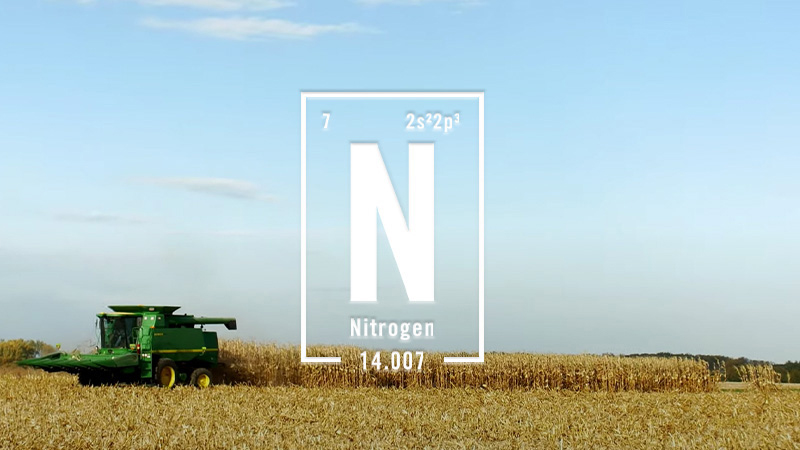The Phosphate And Potash Outlook For 2016
Like other commodities, prices of the leading plant nutrient products dropped sharply in 2015. At this writing, the price of urea fob New Orleans (NOLA) barge had breached $200 per ton, down almost 40% or more than $120 from a year ago. The price of diammonium phosphate (DAP) fob NOLA barge was trading in the $330 per ton range, off more than 20% or about $95 from a year earlier, and the NOLA barge price of blend-grade muriate of potash (MOP) had dropped to the mid-$220s per ton, off about 40% or $145 from a year ago.
So where do phosphorous (P) and potash (K) prices go from here? The answer is no one knows for sure because of the unpredictable events such as extreme weather, macroeconomic shocks, unexpected government policies, and rapid swings in sentiment that move prices. In this case, scenario analysis is often a useful tool to forecast potential market developments. The first step of this process is to identify the key price drivers. The second is to construct scenarios based on how these drivers could plausibly play out. The last step is to handicap the scenarios in order to provide input to decision makers who place bets in P&K markets.
Three Outcomes
Three scenarios are described and handicapped in this article: An uptick, another step down, and a rebound. Each scenario depicts what you would have to believe for P&K prices to move in these directions this year. That obviously is the easy part. Handicapping them is the tough part, and everyone has a system of analysis as well as hunches for assigning a likelihood to each scenario. From our shop, it looks like the most likely scenario is a moderate uptick in P&K prices once significant demand hits the market during the next few months (0.60 probability). The chance of another big step down in prices is possible but looks less likely (0.20 probability), especially given the large declines that have occurred already as well as our read of supply and demand fundamentals. Prospects for a big rebound in prices is possible but also less likely (0.20 probability) absent a weather shock and quick turnarounds of other key drivers.
P&K prices in this scenario are expected to tick up and hold from today’s seasonally low values largely due to significant demand hitting the market during the next few months. In addition, this scenario assumes that financial markets will settle down soon. As a consequence, key P&K currencies are expected to stabilize.
Demand growth is the key feature of this scenario. Positive demand prospects are underpinned by the combination of steady crop prices, recent declines in plant nutrient and fuel costs, and record P&K removal during the last three years.
Agricultural commodity prices are expected to continue to trade in a relatively narrow channel with 2016 new crop corn, soybean, and wheat prices trading in the $4, $9, and $5 per bushel range, respectively. Unlike energy and metals markets, we see no structural imbalance in agricultural commodity markets. Corn is not oil — farmers cannot frack it. And soybeans are not iron ore. The Chinese can stop building skyscrapers but they cannot stop eating.
The latest estimates released by the USDA on January 12 show that yields in 2015/16 were in line with trend. Not surprisingly, global grain and oilseed inventories are projected to remain about flat this crop year. However, stocks in China are forecast to increase while inventories in the rest of the world are projected to decrease this year. Proof of more constructive fundamentals is in the prices. Oil and iron ore prices have plummeted more than 65% while corn and soybean prices are off about 20% and 35%, respectively, since the first quarter of 2014.
Demand prospects remain positive in our view for sound economic and agronomic reasons. In the case of phosphate, we estimate that global shipments of the leading products (DAP/MAP/TSP) totaled a bit more than 65 million tonnes last year, flat with the record level of 2014. Strong gains in India offset declines in Brazil and China last year. Shipments this year are projected to climb to around 66 million to 67 million tonnes in this scenario with most regions registering modest gains. India is expected to notch further gains despite the normal concerns about the monsoon, subsidies, exchange rates, and channel inventories, but buying likely will begin later this year. The outlook in Brazil remains uncertain. Farm economics are highly profitable on paper due to moderate soybean prices and the weak real. In fact, the local currency price of soybeans is at a record high, but the lack of credit continues to constrain P&K demand. Nevertheless, this scenario assumes that farm economics prevail and credit conditions improve as the year wears on.
In North America, we project that phosphate shipments will reach 9.1 million tonnes in 2015-16, up slightly from 9 million in 2014-15. Our demand forecasts assume that U.S. farmers plant 90 million to 91 million acres of corn, 82 million to 83 million acres of soybeans, and 52 million to 53 million acres of wheat in 2016-17. No change in P&K application rates are expected.
K Rations
In the case of K, we estimate that global MOP shipments topped 59 million tonnes in 2015, down a record 63 million in 2014. Channel inventories increased significantly in most geographies in 2014. As a result, shipments in 2015 dropped from extraordinary levels a year earlier due to stunted demand in a few countries such as Brazil and because distributors in other regions such as North America and Southeast Asia worked down pipeline stocks. Several uncertainties characterize the 2016 outlook, but this scenario assumes that MOP shipments will increase to 61 million to 62 million this year based on both affordability and agronomic needs. Shipments are expected to rebound in Southeast Asia and even Brazil. Further gains are projected for China and India. In North America, shipments are projected to total 9.1 million tonnes in 2015-16, down from 9.4 million in 2014-15 due to the additional drawdown of channel inventories rather than a significant change in on-farm use.
P&K prices take another step down in this scenario due to the deterioration of several key drivers. Global financial, energy, and metals markets continue their melt downs. Key P&K currencies devalue even more. A larger-than-expected South American harvest, newly unlocked supplies from Argentina, disappointing Chinese imports, and indications of another large North American crop cause a drop in agricultural commodity prices with 2016 new crop corn/soybeans/wheat prices trading less than $3/$6/$4 per bushel, respectively. Raw materials costs also drop to their lowest level in 10 years. Finally, new capacity such as the K+S Legacy project and the second Jorf Phosphate Hub come online during the last half of the year.
One of the most potent features of this scenario is the prospect of further devaluations of already highly depreciated P&K currencies. The devaluation of a currency lowers the dollar cost of production for a non-U.S. exporter and increases the local currency cost for a non-U.S. importer. As a consequence, the dollar price is pressured down because exporters can clearance price P&K products in order to compete for business in countries needing lower dollar prices to offset the impact of their weaker currencies.
In the case of K, the collapse of the Belarussian ruble, Russian ruble, and Canadian dollar was a key driver of the large drop in prices last year. For example, the price of MOP delivered to Brazil dropped 30% or $110 per tonne from $365 in January 2015 to about $255 today. However, the price in Belarussian rubles declined only 8%, the price in Russian rubles declined 19%, and the price in Canadian dollars dropped 18% during the same period due to the steady devaluation of these currencies throughout the year.
On the demand side of the ledger, the erosion of the Brazilian real, Indonesian rupiah, and Malaysian ringgit dulled demand in these large importing countries last year. For example, while the price of MOP delivered to Brazil dropped $110 last year, the cost in reais increased 7% from about R960 to R1025 per tonne because the real weakened from 2.63 reais per dollar last January to 4.02 so far this January.
K shipments in 2016 are at risk in this scenario. The prospect of a step down in crop prices raises caution flags about on-farm use. In addition, despite a four million tonne drop in shipments last year, it still feels like channel inventories are above average in several key geographies. For example, current MOP inventories at Chinese ports are reported at a massive 2.9 million tonnes. As a result, closely watched Chinese contract negotiations could drag deep into 2016. In this scenario, global MOP shipments remain at or even drop below last year’s total, despite the prospect of even lower potash prices in this scenario.
In the case of phosphate, the collapse of the ruble benefitted Russian exporters. More worrisome is the potential for a devaluation of the Chinese RMB. China has emerged as the largest exporter of the leading phosphate products, and a significant devaluation could more than offset the impact of the recently imposed VAT tax and boost exports even further this year.
A Big Rebound
P&K prices rebound in this scenario as a result of a pop in crop prices and the beginning of a strong “the-crisis-is-over” recovery in global financial markets. Agricultural commodity prices rally due to strong demand growth, a smaller-than-expected Southern Hemisphere harvest, and growing concerns about a rapid transition from El Niño to La Niña and the corresponding increase in the odds of a North American drought this summer. In particular, 2016 new crop corn, soybean, and wheat prices rally to the $5/$11/$6 per bushel range, respectively. Global equity markets surge out of bear territory mainly on good news about the Chinese economy. The dollar weakens, and key P&K currencies even strengthen a bit. Raw materials costs also inch up based on improved demand prospects. Sentiment even turns positive.
A pop in agricultural commodity prices is the trigger for this scenario. History demonstrates that crop prices can turn quickly thanks in large part to Mother Nature. There clearly is a wide range of potential outcomes in 2016-17. Our farming-with-spreadsheets exercise shows that demand growth of 2% coupled with below trend yields would result in a noteworthy drawdown of global grain and oilseed stocks. So while not a high likelihood this year, a pop in agricultural commodity prices is not a zero probability either.
In the case of P, recent price declines look more like seasonal variation rather than a cyclical downturn in this scenario. A rally in crop prices likely would boost global shipments to the upper end of our forecast range or about 68 million tonnes. Continued gains in India and a recovery in Brazil drive growth. On the supply side of the ledger, outages at several facilities are expected to continue this year in this scenario.
In the case of K, higher crop prices also are expected to boost global MOP shipments to the upper end of our forecast range or about 63 million tonnes. We have long maintained that operational capacity is far less than nameplate capacity. In fact, our estimate of the maximum amount that the global industry could produce this year is about 69 million tonnes MOP.In this scenario, the industry operates at about 91% of capacity. We expect less price pressure from the devaluation of key potash currencies in this scenario so a demand rebound of this magnitude likely would pull up prices. Finally, no major capacity additions including the K+S Legacy project are expected on line and no disruptive Canpotex proving runs are scheduled to take place in 2016 in this scenario.






